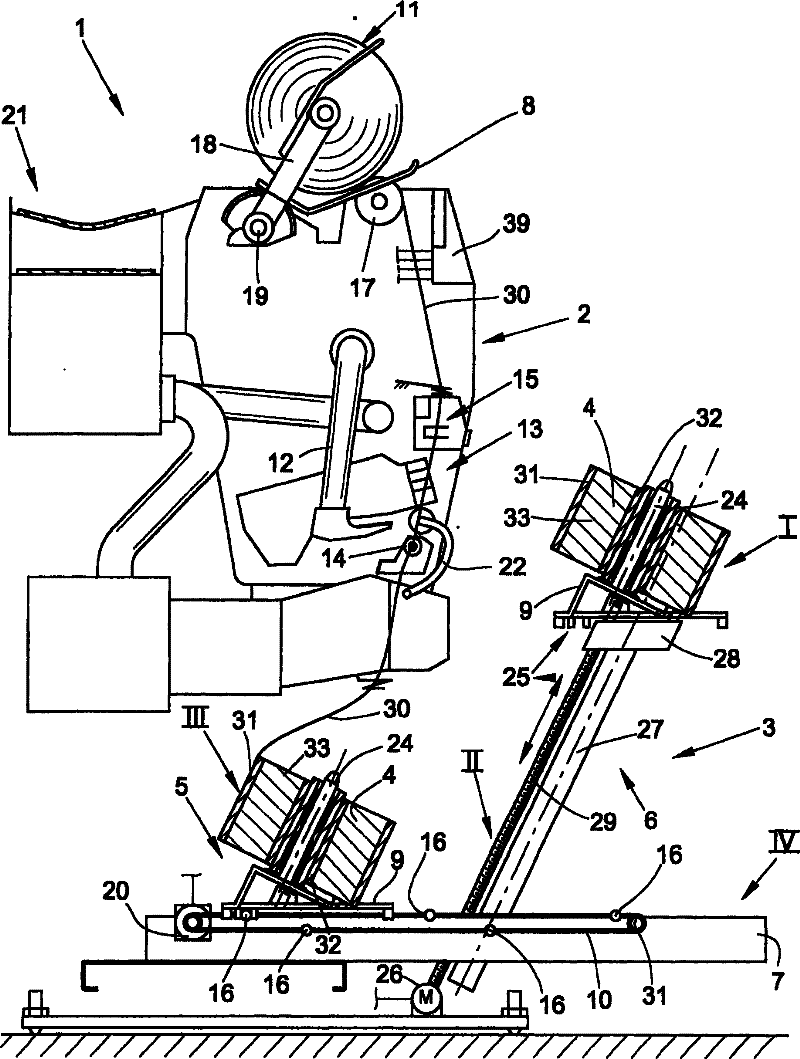Method for rewinding dye bobbins to cross-wound bobbins
A technology for cross-winding bobbins and bobbins, which is applied in the directions of thin material handling, conveying filamentous materials, transportation and packaging, etc., can solve the problems of expensive control and operation of textile machines, decrease in cost and productivity, etc., to improve productivity and improve productivity. , the effect of quick adjustment
- Summary
- Abstract
- Description
- Claims
- Application Information
AI Technical Summary
Problems solved by technology
Method used
Image
Examples
Embodiment Construction
[0021] figure 1 Schematically represents a front view of a textile machine for producing cross-wound bobbins, namely an automatic cross-winder in this embodiment, which is generally designated by reference numeral 1 . The automatic cross-winder 1 has between its end frames 35 , 36 a number of work stations, so-called winders 2 .
[0022] as from figure 2 As can be seen in particular, the dyeing bobbin 4 is rewound on the winder 2 to form a cross-wound bobbin 11 . The finished dyeing bobbins 4 newly rewound to form cross-wound bobbins 11 are conveyed by an automated service unit, for example by means of a cross-wound bobbin changer 23, onto a conveying device 21 which takes the cross-wound bobbins 11 to a bobbin loading station (not shown) or the like arranged at the end of the machine.
[0023] Such an automatic crosswinder 1 generally also has a central control unit 37 which is connected, for example via a machine bus 40 , not only to the individual winder computers 39 of...
PUM
 Login to View More
Login to View More Abstract
Description
Claims
Application Information
 Login to View More
Login to View More - R&D
- Intellectual Property
- Life Sciences
- Materials
- Tech Scout
- Unparalleled Data Quality
- Higher Quality Content
- 60% Fewer Hallucinations
Browse by: Latest US Patents, China's latest patents, Technical Efficacy Thesaurus, Application Domain, Technology Topic, Popular Technical Reports.
© 2025 PatSnap. All rights reserved.Legal|Privacy policy|Modern Slavery Act Transparency Statement|Sitemap|About US| Contact US: help@patsnap.com



